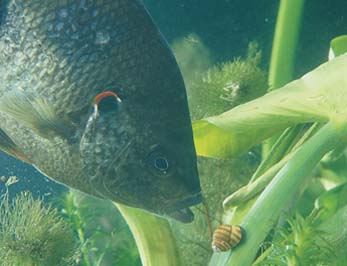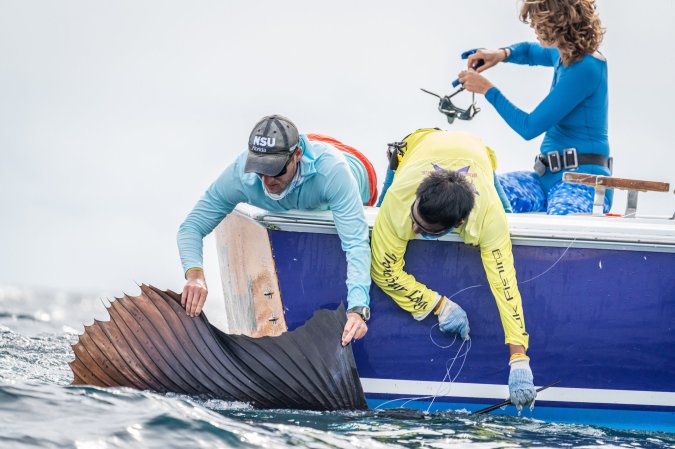During Covid-19 lockdowns, there was a significant uptick in the amount of fishing license sales across the country, and I’ve seen an increase in the pressure fishing tournaments have put on the resource as I travel around the country fishing kayak bass tournaments. With so many new anglers coming into the fold, safe, ethical practices on handling fish are paramount. One of the most controversial topics is the act of fizzing fish.
Fizzing involves venting the excess gas from the swim bladder of a fish after it has been brought up from deep water, usually from a depth of 20 feet or more. When any species of fish are reeled up to the surface from those depths, their swim bladder expands due to the reduced water pressure, resulting in barotrauma. (This is similar to the bends, which affects scuba divers who surface too rapidly.) When a fish experiences barotrauma, it is unable to stay upright. It floats on its side, and preventing it to swim back down once released. Barotrauma can also cause internal damage to the fish if it’s not treated quickly.
Signs of barotrauma include blood in the mouth of the fish, a bloated swim bladder, and the bladder protruding into the mouth of the fish.
Fizzing fish takes precision. You must use a hollow needle and poke a hole in the swim bladder to relieve the pressure. You need to have a basic understanding of fish anatomy to capably perform this procedure correctly. Fizzing can be done through the throat (which most biologists don’t recommend), or the more accepted method, which involves lining the needle up with the pectoral fin and counting two or three scales before sticking it into the fish.
I believe in the practice of fizzing fish. There are some anglers who are not in favor of it, mainly because it does take real skill to fizz a fish. That said, it’s not difficult once you understand how to do it. Many believe you are only further damaging the chances a fish will survive by fizzing it. That is true—but only if the fizzing is done incorrectly. If you don’t know how to fizz a fish correctly, simply keep the fish (if it meets state or local lake inch-length requirements), or just don’t fish deep water.

Fizzing Fish Is More Widely Accepted Than You Think
Joe Balog grew up fishing the Great Lakes, and has made a living as a charter boat captain, fishing writer, and tournament angler. He also worked in wildlife management. He has been very involved with fish and livewell care, and he has working closely with biologists to find the best ways to transport and handle fish during a tournament.
“It’s important to realize in terms of the scientific community, fizzing isn’t a controversial thing. It isn’t a good or a bad thing, it’s just something that you do when you are fishing deep,” Balog says. “If you aren’t fishing a tournament, the quicker you can catch and release that fish, the better. If you bring a fish up, immediately unhook it and let it go… Ninety-five percent of fish will go back down without the need to fizz. I’m all for that. But if the fish remain out of water [for photos] or in a livewell, they will need to be fizzed.”
If you see that a fish is suffering from barotrauma, you must fizz it, because the odds of it surviving otherwise are incredibly low.
“There’s a zero percent chance the fish will live if it [remains] on the surface, so fizzing is a must at that point,” Balog says.
As for the two methods of fizzing, Balog is a proponent of inserting the needle from the fish’s side.
“There are two schools of thought on fizzing,” he said. “Some people stick them in their throats, some [by] the pectoral fin. All the biologists I’ve spoken with have been adamantly opposed to going through the throat.”
Read Next: How to Catch and Release Bass in the Heat of Summer—Without Killing Them
What’s most important is that you handle fish properly and are aware that catching fish in deep water comes with responsibility. You owe it to the fish and other anglers to either learn how to fizz or have the common sense not to fish too deep or keep any legal fish you do hook in more than 20 feet of water.

































